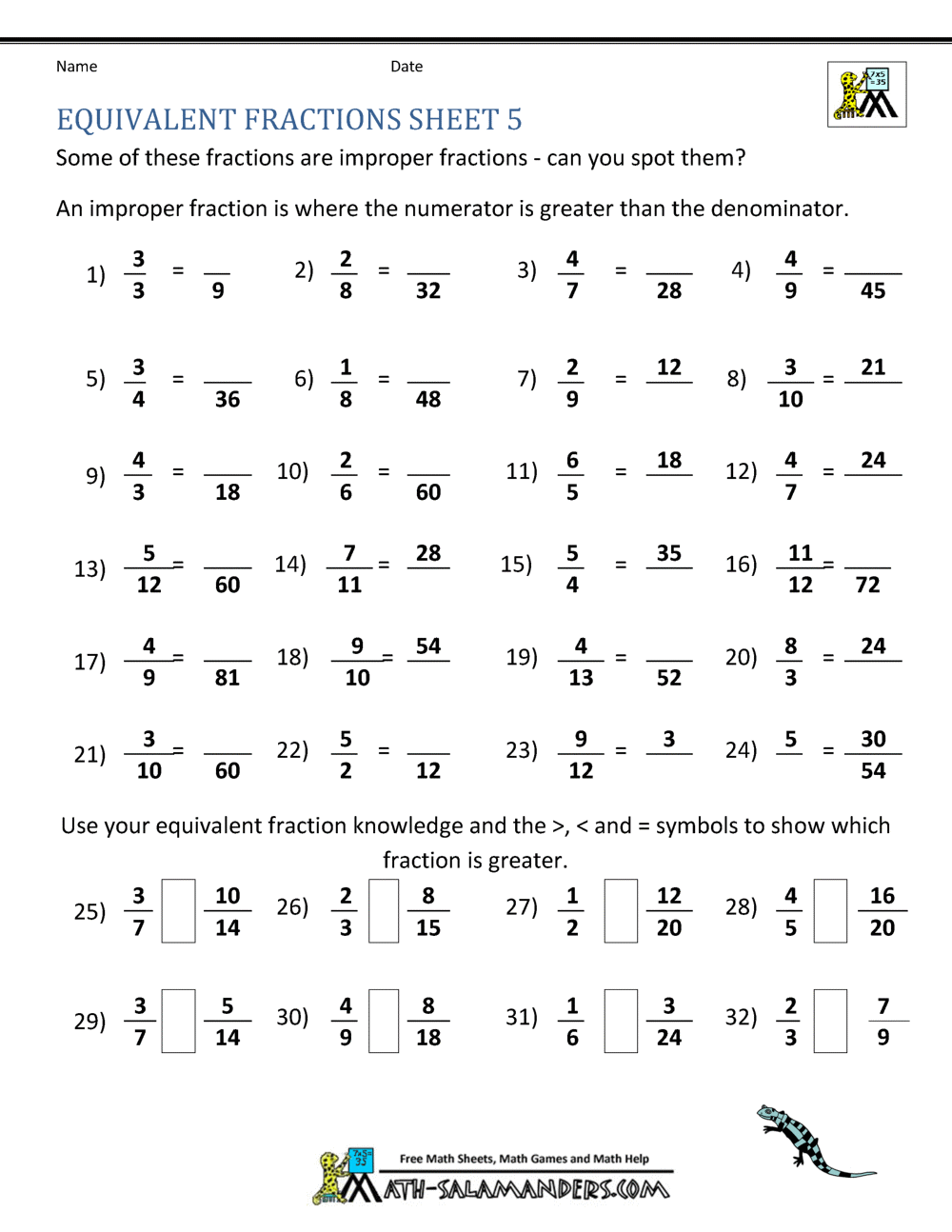

If we don't, we ignore the whole number component, convert the fractional component alone, then add the whole number component back in unchanged. However, we don't have to convert to an improper fraction as above.For instance, 5/3 × 2/2 = 10/6, which is still equivalent to 1 2/3. Then, if desired, you can convert as needed. To convert to an improper fraction, multiply the whole number component of the mixed number by the denominator of the fractional component and then add it to the numerator.If you need to convert a mixed number to an equivalent fraction, you can do it in two ways: by changing the mixed number to an improper fraction, then converting as normal, or by maintaining the mixed number and receiving a mixed number as an answer. 1 3/4, 2 5/8, 5 2/3, etc.) can make the conversion process a little more complicated. Obviously, not every fraction you come across will be as easy to convert as our 4/8 example above. If desired, convert mixed numbers to improper fractions to make converting easier. -10 = 2x, and divide by 2 to solve for x.2 = 2x + 12, then we should isolate the variable by subtracting 12 from both sides.2x + 2 = 4x + 12, then we can simplify the equation by subtracting 2x from both sides.In this case, as above, we'll solve by cross multiplying:

For instance, let's consider the equation ((x + 3)/2) = ((x + 1)/4).Similarly, if the numerators or denominators of your fractions contain variable expressions (such as x + 1), simply "multiply through"by using the distributive property and solve as you normally would. For instance, if both fractions contain variables, you just have to eliminate these variables at the end during the solving process. One of the best things about cross multiplication is that it works in essentially the same way whether you're dealing with two simple fractions (as above) or with more complex fractions. Use cross multiplication for equations with multiple variables or variable expressions. For our other example of 8/16, the GCF is 8, which also results in 1/2 as the simplest expression of the fraction. So, in our 4/8 example, since 4 is the largest number that divides evenly into both 4 and 8, we would divide the numerator and denominator of our fraction by 4 to get it in simplest terms. The greatest common factor (GCF) of the numerator and denominator is the largest number that divides into both to give a whole number result.To convert a fraction that's not in simplest terms to an equivalent form that is, we divide the numerator and denominator by their greatest common factor. Neither can be divided by the any whole number to obtain anything smaller. When a fraction is in its simplest terms, its numerator and denominator are both as small as they can be.23 February 2021 This step operates by the same logic of expressing equivalent fractions by converting them to have the same denominator, but this method seeks to reduce each fraction to its lowest expressible terms. X Expert Source David JiaĪcademic Tutor Expert Interview. Most fractions should typically be expressed in their lowest terms, and you can convert fractions to their simplest terms by dividing by their greatest common factor (GCF). Reduce the fractions to their lowest terms. You can multiply the numerator and denominator by any whole number, no matter how large or small to obtain an equivalent fraction. Any given fraction has an infinite number of equivalent fractions.The same way it’s fair to say that 4/8 = 8/16. Thus, it's easy to see why 4/8 and 8/16 are equivalent since multiplying 4/8 × (2/2) = 4/8 still. Notice that 2/2 equals 1 when you carry out the division.(4×2)/(8×2) is essentially the same as 4/8 × 2/2 Remember that when multiplying two fractions, we multiply across, meaning numerator to numerator and denominator to denominator.For instance, if we take the fraction 4/8 and multiply both the numerator and denominator by 2, we get (4×2)/(8×2) = 8/16.Though the numbers in the new fraction will be different, the fractions will have the same value. In other words, multiplying the numerator and denominator of a fraction by the same number will produce an equivalent fraction. Two fractions that are different but equivalent have, by definition, numerators and denominators that are multiples of each other. Multiply the numerator and denominator by the same number.


 0 kommentar(er)
0 kommentar(er)
